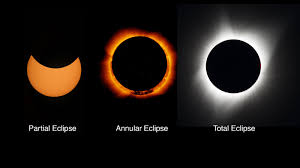Solar Eclipses: A Rare Opportunity to Study Cloud Formation
Solar eclipses, often celebrated as breathtaking celestial events, provide more than just a visual spectacle for astronomy enthusiasts. These rare occurrences also offer scientists a unique opportunity to study cloud formation in the Earth’s atmosphere.
During a solar eclipse, the Moon moves between the Earth and the Sun, casting a shadow that temporarily blocks out the Sun’s rays. This sudden reduction in solar radiation has a profound impact on the Earth’s atmosphere, influencing temperature, wind patterns, and moisture levels. These changes can trigger the formation of clouds in ways that are not normally observed.
One of the key factors that researchers study during a solar eclipse is the Earth’s energy balance. The sudden loss of sunlight causes a rapid cooling of the atmosphere, which in turn can lead to the formation of clouds. By monitoring these changes in real-time during an eclipse, scientists can gain valuable insights into the complex interplay between solar radiation, atmospheric dynamics, and cloud formation.
In addition to studying the effects of solar eclipses on cloud formation, scientists also use these rare events to validate and improve climate models. By comparing actual observations during an eclipse with the predictions of climate models, researchers can refine their understanding of how clouds form and evolve under different environmental conditions.
Furthermore, solar eclipses offer a natural laboratory for studying the interaction between clouds and solar radiation. By analyzing how clouds behave during an eclipse, scientists can investigate their impact on the Earth’s energy budget and climate system. This research is crucial for improving climate models and predicting future changes in the Earth’s climate.
Overall, solar eclipses provide a unique opportunity for scientists to study cloud formation and its role in the Earth’s climate system. By taking advantage of these rare events, researchers can deepen their understanding of atmospheric processes and improve our ability to forecast and mitigate the impacts of climate change.

